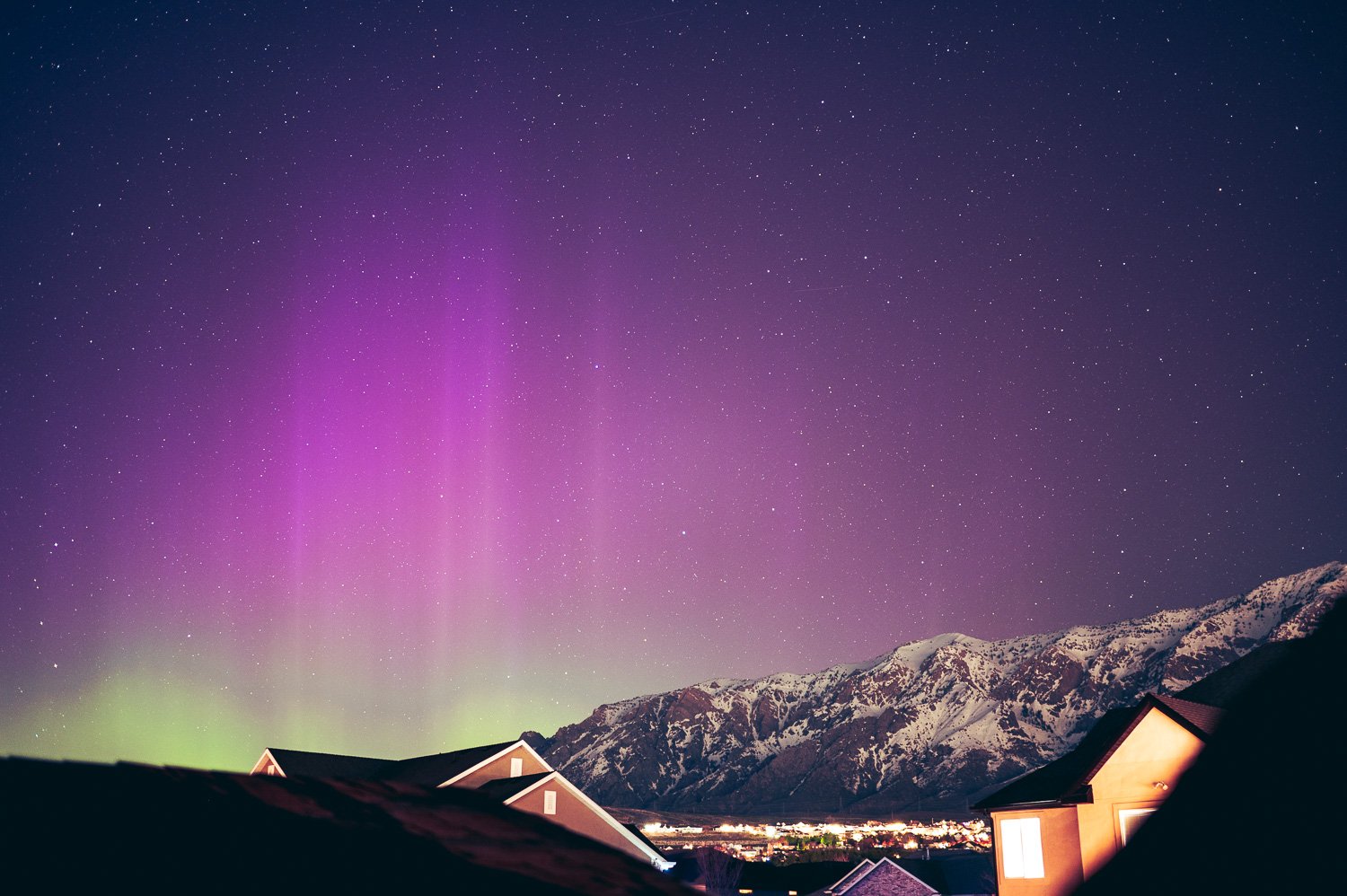The Northern Lights in Utah
Late last night, while my husband and I were finishing one of our favorite movies (How to Lose a Guy in 10 Days), I got a text from my mom stating that we can see the northern lights, and people as far south as Woodscross can see them.
I immediately ran outside and low and behold, I could see them too! It didn’t take long for me to grab my Nikon camera, tripod, and a Minky blanket, snapping pictures as quickly (or slowly) as I could.
I set my camera up with the following settings: ISO 640 F1.4 6”
After the first shot, I was addicted and took about 30 more, moving from my back patio, to the side of the house, and ending on the deck of my children’s playhouse. I couldn’t believe how much color my camera was picking up, let alone the shear scale of the lights!
It was absolutely breathtaking to witness. In the short 15-minutes I was outside, the northern lights started over Ben Lomond and moved west as the earth rotated over Willard Bay.
What are northern lights?
According to the National Park Service (NPS), the “aurora borealis (Northern Lights) occur when a coronal mass ejection (CME), a massive burst of solar wind and magnetic fields, interacts with elements in the earth's atmosphere. Coronal mass ejections are often associated with other forms of solar activity, most notably solar flares.”
The color of the northern light depends on the altitude of the oxygen and nitrogen. So in my images above, the green color is oxygen that is about 150 miles in altitude and the purple/violet color is nitrogen that is above 60 miles in altitude. Typically, the lights can be visible at lower latitudes when solar activity is high, which is why we were able to witness them in Northern Utah last night.
Visit the NPS website to read more about the northern lights.





